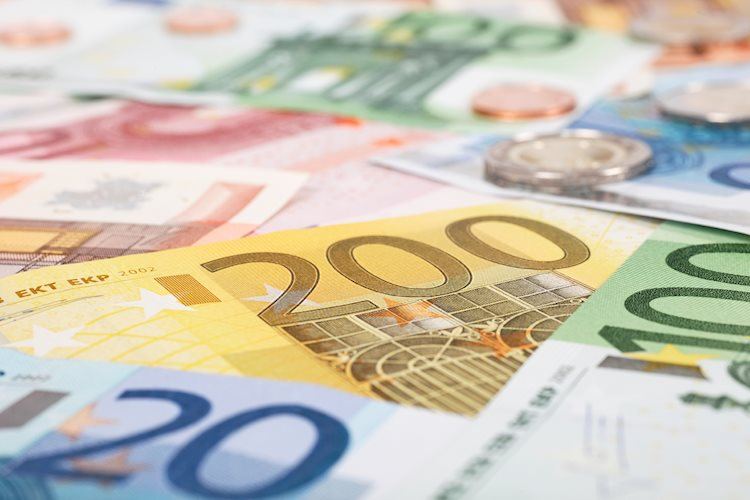- EUR/USD rebounded on Friday, clipping a week-long losing streak.
- A last-second recovery in Fiber bids came from broad-market Greenback weakness.
- The Euro remains poised for further losses after another rate cut from the ECB this week.
EUR/USD drifted into a rebound on Friday, snapping a four-day losing streak. A wider selloff in Greenback flows off the back of a broad-market recovery in risk appetite was the primary driver in Fiber gains to wrap up the trading week, rather than any intrinsic boosts in Euro markets.
A midweek rate cut from the European Central Bank (ECB) gave markets little reason to prop up the Euro in the near-term, and Fiber bulls will be forced to sit on their hands and wait until next Thursday’s pan-EU Purchasing Managers Index (PMI) figures before getting a chance to exercise their buy buttons meaningfully.
US housing and construction figures came in moderately mixed on Friday, further entrenching investors in a buying mood and further crushing any fears of an economic slowdown right around the corner. The US’ “soft landing” scenario appears to have been fully averted with growth and activity metrics easily beating expectations, and upbeat Retail Sales figures releases earlier this week further make the case.
EUR/USD price forecast
EUR/USD has staged a modest rebound after testing lows near the 1.0850 level, with the pair currently trading around 1.0867. However, the broader bearish structure remains intact as long as the pair stays below the 200-day Exponential Moving Average (EMA), which is situated at 1.0899, and the 50-day EMA at 1.0997. The recent bounce could see further upside, but the bears are likely to defend the 1.0900 area vigorously. A rejection at this level would reaffirm the downtrend, potentially pushing the pair back towards the 1.0800 psychological support.
The Moving Average Convergence Divergence (MACD) indicator continues to point to downside pressure, with both the MACD and signal lines in negative territory. Despite the recent uptick in price, the histogram remains bearish, suggesting the current recovery might be limited. A break above the 200-day EMA at 1.0899 would be necessary to signal a meaningful shift in momentum, targeting the 1.0950 and 1.1000 resistance levels. However, failure to break through this barrier could result in renewed selling pressure, with the next significant support seen around 1.0800.
EUR/USD daily chart
Euro FAQs
The Euro is the currency for the 19 European Union countries that belong to the Eurozone. It is the second most heavily traded currency in the world behind the US Dollar. In 2022, it accounted for 31% of all foreign exchange transactions, with an average daily turnover of over $2.2 trillion a day. EUR/USD is the most heavily traded currency pair in the world, accounting for an estimated 30% off all transactions, followed by EUR/JPY (4%), EUR/GBP (3%) and EUR/AUD (2%).
The European Central Bank (ECB) in Frankfurt, Germany, is the reserve bank for the Eurozone. The ECB sets interest rates and manages monetary policy. The ECB’s primary mandate is to maintain price stability, which means either controlling inflation or stimulating growth. Its primary tool is the raising or lowering of interest rates. Relatively high interest rates – or the expectation of higher rates – will usually benefit the Euro and vice versa. The ECB Governing Council makes monetary policy decisions at meetings held eight times a year. Decisions are made by heads of the Eurozone national banks and six permanent members, including the President of the ECB, Christine Lagarde.
Eurozone inflation data, measured by the Harmonized Index of Consumer Prices (HICP), is an important econometric for the Euro. If inflation rises more than expected, especially if above the ECB’s 2% target, it obliges the ECB to raise interest rates to bring it back under control. Relatively high interest rates compared to its counterparts will usually benefit the Euro, as it makes the region more attractive as a place for global investors to park their money.
Data releases gauge the health of the economy and can impact on the Euro. Indicators such as GDP, Manufacturing and Services PMIs, employment, and consumer sentiment surveys can all influence the direction of the single currency. A strong economy is good for the Euro. Not only does it attract more foreign investment but it may encourage the ECB to put up interest rates, which will directly strengthen the Euro. Otherwise, if economic data is weak, the Euro is likely to fall. Economic data for the four largest economies in the euro area (Germany, France, Italy and Spain) are especially significant, as they account for 75% of the Eurozone’s economy.
Another significant data release for the Euro is the Trade Balance. This indicator measures the difference between what a country earns from its exports and what it spends on imports over a given period. If a country produces highly sought after exports then its currency will gain in value purely from the extra demand created from foreign buyers seeking to purchase these goods. Therefore, a positive net Trade Balance strengthens a currency and vice versa for a negative balance.
